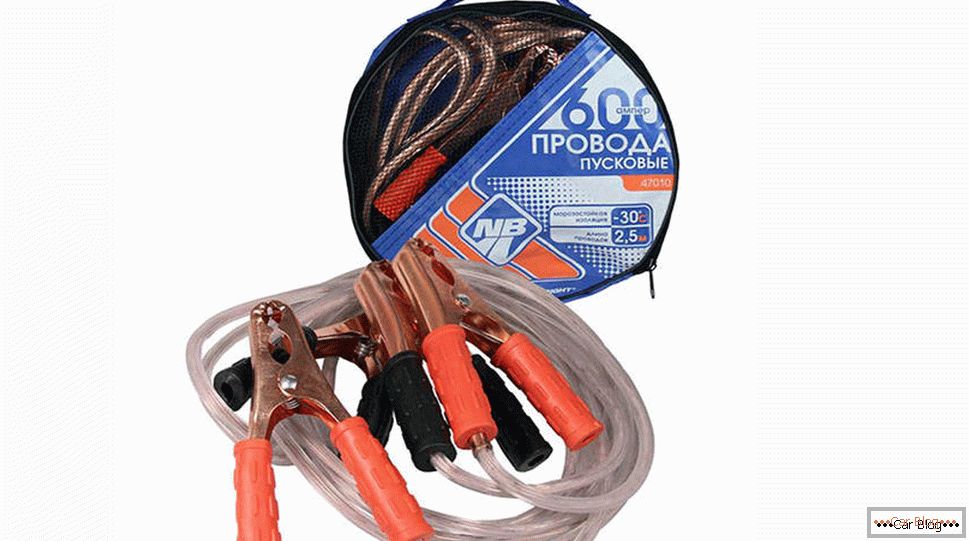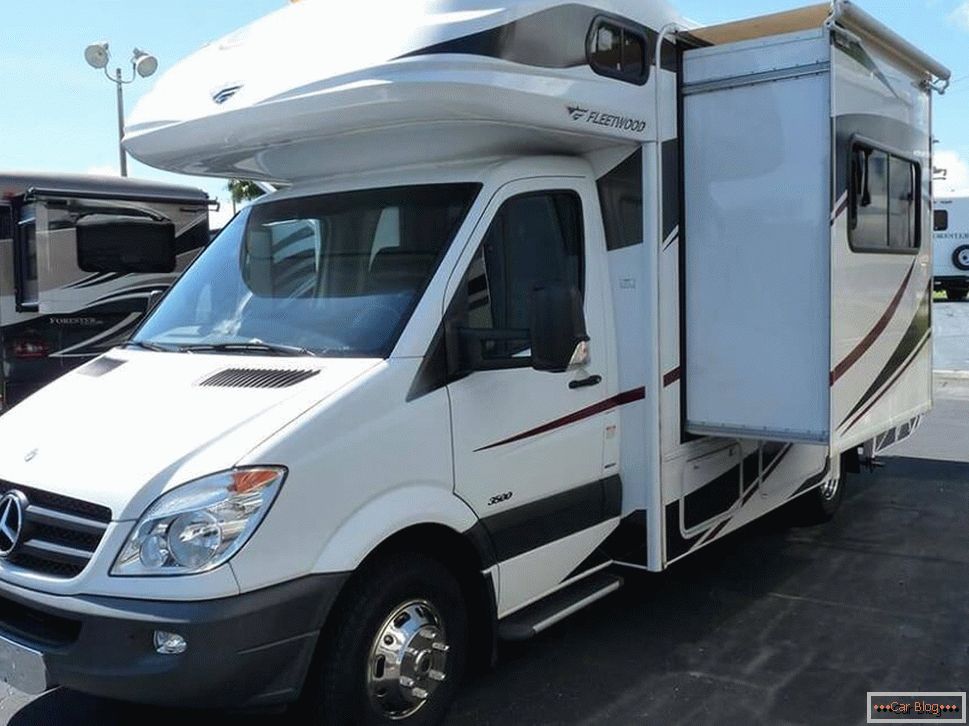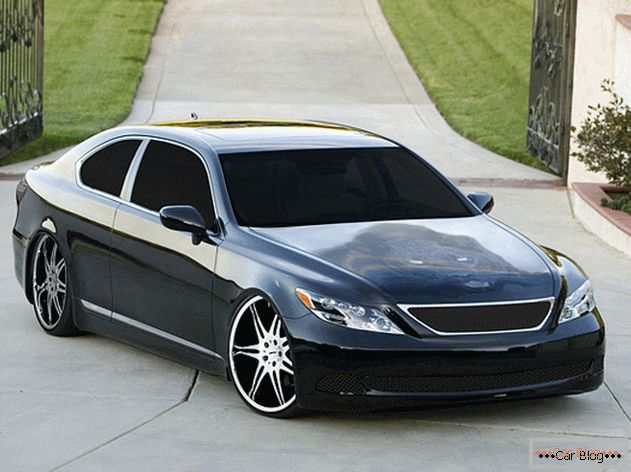>
Any experienced driver will surely remember cases in his practice when it is impossible to start the car - the starter cranks the crankshaft several times and calms down with convulsive convulsions. And then you remember how the day before you listened to Queen in the car, but your wife called, you set the sound of the radio tape recorder to a minimum and eventually you forgot about it completely. Or that, having driven into the garage or to the parking lot, we hurried home so much that we forgot to turn off the dimensions or the interior light. One way or another, but in most cases such troubles occur at the most inopportune moment when you urgently need to go somewhere. Opportunities to realize a little. Push the car - you need a team of volunteers, healthy. Search tug - even more hopeless occupation. But to find a friend or neighbor who will help you to start the engine by providing your own battery for lighting - perhaps the best option. The only catch is that for this you need to have a special set of starter cables. And it turns out that the choice of suitable wires for lighting a car is not an easy task, the modern market is literally overflowing with similar products, which differ in both cost and different performance characteristics. How to understand this chaos is the main goal of this analytical material.
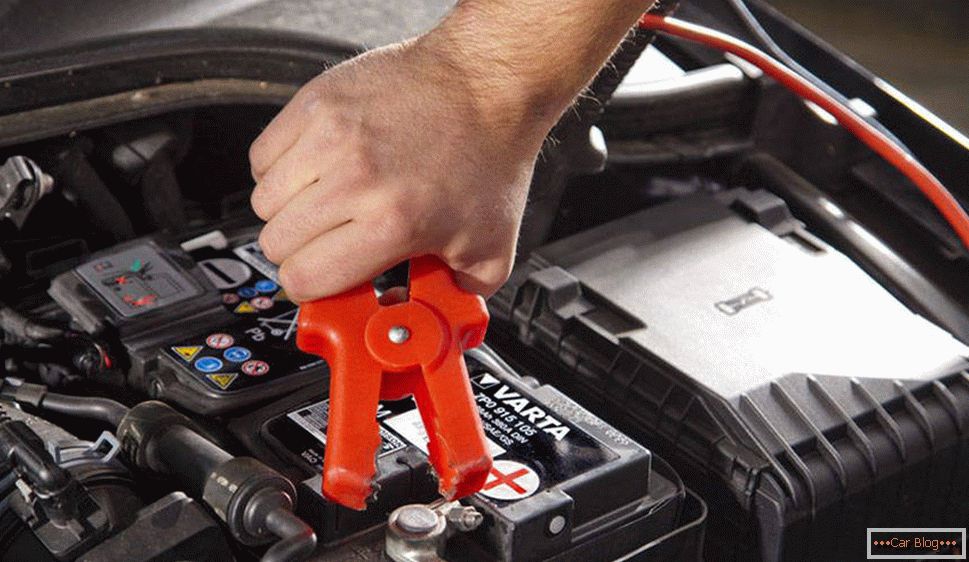
Recommendations on the choice of wires for lighting cars.
Читать далее про то как правильно выбрать провода для прикуривания автомобиля-->
Criteria for selecting wires for abnormal engine start
Before the wires for lighting is the only task - to transfer the starting current from the charged "neighbor" battery to its own battery, the charge of which is at a level close to zero. At the same time it is necessary to ensure the minimization of losses, which are unavoidable due to the imperfection of terminal structures and many other factors. From the point of view of theoretical physics, for this kind of measures it is necessary to choose wires that have as little resistance as possible. In this case, the most insignificant difference in the potentials at the end points of the connection of the donor battery with the acceptor is ensured. According to the knowledge drawn from the school textbook on physics, the resistance in a cable depends on several factors: the cross-sectional area of the wires, their length and the material of manufacture. These criteria and in practice are decisive when choosing the best or optimal cables for lighting a car. Consider them in more detail.
Wire length
Light a cigarette and your own car - these are slightly different things. In the second case, it should be noted that the distance between the alien and its own battery can be significant for various reasons. However, this does not mean that you only need to buy sets of maximum length. The shorter the wire, the smaller the voltage drop will be. The calculation principle here is simple: a cable with a length of 1 meter will generally have a potential difference of half a volt. With a sufficiently large starting current, this is a completely acceptable voltage drop. On the three-meter wire you will lose 1.5 V, and taking into account the fact that two wires are used for lighting up (negative and positive), then your losses will be 3 volts. That is, if the voltage on the donor battery is 13 V, then only 10 will reach your battery, which does not guarantee a successful launch. Especially if there are also problems with the engine.
A long cable is needed in cases where a regular battery place is a trunk or a cabin (do not be surprised, this is not such a rarity). However, in this case, a sufficiently powerful terminal for emergency starting of the power unit should be provided, located in the engine compartment. Most often, its location is under a bright red or orange insulating gasket, on which the “+” sign is drawn. In this case, a set of wires is suitable for lighting a car with a length of 2 to 3.5 meters. If the car is in the garage of the trunk to the gate, you have to push it out, which is not always possible. Therefore, experienced drivers drive back to the garage. There are models in which the battery is located on the passenger side - in this case, it is better to get the wires longer, since there may be a situation when the donor car can not drive to your car from the right side.
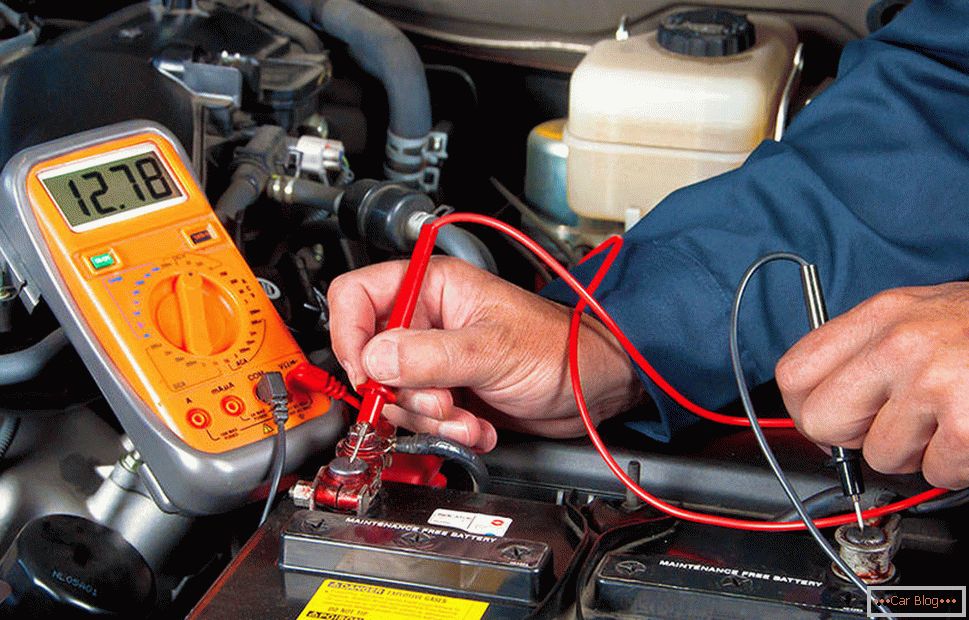
Cross-sectional area
Another critical parameter that affects the efficiency of lighting. According to practical experience, the minimum cross-sectional area of the current-carrying cable should be 16 mm2, or about 5 millimeters in diameter. If you select wires with a smaller cross-sectional area, they will become very hot during lighting, which will lead to an even greater drop in potential difference. Typically, these kits are made by the Chinese, who love to save literally everything. Some manufacturers from the Middle Kingdom, in an effort to reduce the cost of their products (copper is a rather expensive material), produce wires for lighting a smaller diameter, hiding this by increasing the thickness of the insulating layer. Therefore, the most appropriate solution would be the choice of wires for lighting a car from domestic manufacturers - such kits are not much more expensive than Chinese ones and at the same time guarantee the compliance of the declared parameters with the real ones.
Material manufacturing wires, clips and insulation
Current-carrying conductors made from copper stranded wire. But here there are some nuances, because copper from different manufacturers using their own technologies, which differ from others, will be able to have different quality. So, the wiring for connecting parts of the speaker systems is manufactured using seven patented technologies. The process of lighting a car, in terms of cable manufacturing technology, is less demanding on the quality of the wire, so it is customary to use a material of not the highest standard.
Aluminum is a metal with lower resistivity, so theoretically it is more preferable for electrical conductors. But its use is limited due to two significant drawbacks: it melts at sufficiently low temperatures and has a high brittleness. For this reason, aluminum wires are not made for lighting. At least - in the factory.
Requirements for crocodile clips are not as rigid as for wiring, therefore their material of manufacture varies widely - from copper to bronze, from steel to brass. Brass or copper are preferred. Steel has the disadvantage that when it comes into contact with copper, due to the different physical properties of materials, the resistance to current flow increases, which leads to an increase in electrolysis processes. Outwardly, this is manifested by the appearance of a raid on the wires of a whitish or green hue. In the case of bronze there is a risk of breakage of the clamp, as this metal is also very brittle. A good and cheaper option - crocodiles made of steel, but with copper teeth.

The standard material for the manufacture of insulation is a soft variety of polyvinyl chloride, known by the acronym PVC. Outwardly, a non-expert will not be able to assess the quality of such insulation, therefore one should be guided by the characteristics present on the package or on the insulation itself. Here the most important parameter is the operating temperature range. If the lower limit is not high enough, then in severe frosts such insulation often cracks, which makes it impossible to use the kit for its intended purpose. Thus, from the point of view of the material of manufacture, it is better to use wires for lighting a car from copper, clamps — also from copper or brass; PVC insulation that can withstand temperatures up to minus 30 degrees.
How to avoid buying substandard wires
Even in auto parts stores you can see a lot of starter-wire sets, which have neither the name, nor the description of the characteristics, nor the marking, by which an experienced motorist is able to assess the quality of the product. Noname cables, suspiciously low cost and lack of detailed information about the product should even alert an inexperienced buyer. It is unlikely that you go to the store with a caliper in your pocket, so it is unlikely to be able to determine whether the thickness of the wire corresponds to the stated or nominal one. By purchasing such a kit, you run the risk of starting a fire if you try to connect a donor battery to the fully-charged battery of your car. Therefore, too thin wires need to be connected to at least a little rechargeable battery-acceptor.
To avoid such a risk, do not “get fooled” at low prices, buy products with marking, study the main brands present in the Russian market and do not purchase products of unknown companies. As noted above, it is better to purchase wires for lighting a car from domestic manufacturers and always carry them in the glove compartment or trunk of your car. Even if you do not need them, it is possible that you will be able to help out another driver who has fallen into a hopeless situation.
How to "light" the car correctly
To connect to the terminal "+" on the broken battery, you must use the positive cable terminal, painted in red. The second end of this wire should be connected to the same positive terminal of the donor battery. The black cable is connected at one end to the negative terminal of a charged battery, and the other is not connected to the “-” terminal of your battery, as this usually leads to a quick discharge of the neighboring battery, but to any unpainted metal part of your car engine. To charge your battery, you need to start the donor's engine and let it idle for about 10 - 15 minutes. After that we turn off the neighbor's motor (remembering to turn off the ignition) and try to start our own. If your battery is not enough recharged, you need to wait a few minutes and then try again from the beginning.
If successful, it is necessary to allow the power unit to warm up for several minutes, and also only at idle, without depressing the accelerator pedal - otherwise a sharp increase in generator speed may cause a voltage jump in the on-board power network with the risk of damage to your car’s electronic components. We suppress the motor and disconnect the cables in the reverse order: first disconnect the ground, then the black wire from the donor battery. Then in the same sequence remove the red wire. Inexperienced motorists use a different method of lighting, trying to start their engine when the donor's motor is running. This is a more dangerous procedure for both cars, because there is a possibility of generator overload or a power surge, which will “cut down” the electronics currently working.
Even more unacceptable is the lighting of the circuit, when a charged battery is removed from the donor’s car and installed on your replacement, and after starting the engine and a brief warm-up, the battery is removed without plugging in the power unit, installing the native battery in a regular place. This procedure is extremely dangerous, because if at the moment of disconnecting the terminal the generator produces a voltage surge, all the electronics will be powered by this abnormal voltage. What it threatens - no need to explain. An expensive electronic control unit, lighting devices and other included consumers of electricity may suffer.
In addition, there is a risk that free terminals during installation of the battery can close with even more sad consequences for the car. Equally dangerous is the operation of connecting the battery itself, since there is a growing risk of reversal of both batteries. Finally, at the time of removing the battery terminals increases the likelihood of problems with the security system, immobilizer. The car radio settings may be lost. So this method of lighting should be excluded from its practice once and for all.
Rating starting wires for the car
Heyner
The products of the German manufacturer are notable for both their high cost (from 4,000 rubles per set) and the corresponding quality. Wires are delivered in a neat fabric case with a comfortable handle and a zipper. They are characterized by high frost resistance - they are able to work at temperatures up to minus 30 degrees. They have a length of 3.5 - 4.5 meters (the longest wires in our rating). Although the positive and negative wires are made separately, they are interconnected by a box in which an overvoltage suppressor is located. The method of connecting cables with clamp - threaded connection. The cable insulation is marked (DIN72553-25mm2). The crocodiles themselves are made of brass by molding, have a plastic coating, are made using dual contact technology: both halves of the clamp are interconnected with a wire, therefore both jaws of the crocodile are current-carrying, which increases the total contact area, allowing more current to flow face value. Each cable consists of 320 copper cores with a cross section of 0.07 mm2, the total cross section of the wire is 22.5 mm2 with a core diameter of 0.3 millimeter.
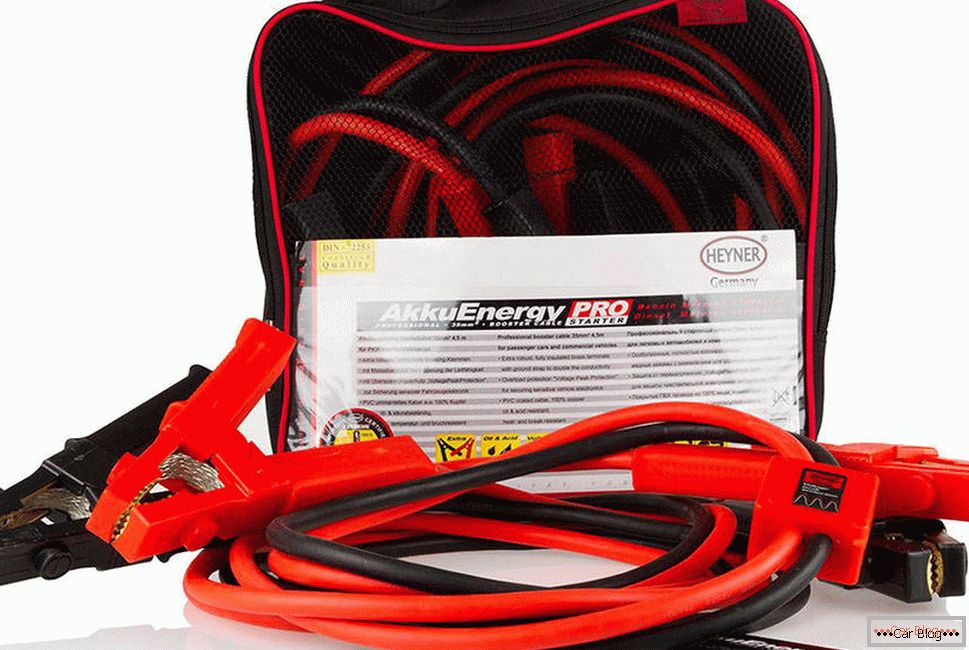
 Discounts for new cars! Profitable loan from 9.9% installments 0%
Discounts for new cars! Profitable loan from 9.9% installments 0%  adom.ru
adom.ru
Airline
This Chinese products - the fruit of the development of St. Petersburg engineers. At a cost of about 400 rubles, they are characterized by excellent frost resistance (up to minus 40 degrees). Supplied in plastic or cardboard packaging, the wires have a length of 2 to 5 meters. The red and black wires are connected, the way to connect the cable to the “crocodile” is a simple mechanical crimp. The insulation of the wire is marked with Airline SA200-02 200A (the latter parameter indicates the magnitude of the starting current and can vary from 200-400A). The clamps are made of plastic, the contacts are steel coated with copper, the method of connecting the contacts with clamps is riveted. Like the previous set, “crocodiles” are made using dual contact technology, which is an undoubted advantage of an inexpensive set, as is the maximum isolation of “crocodile” contacts. The cable consists of 120 copper cores with a cross section of 0.07 mm2 and a diameter of 0.3 millimeter. The total wire gauge is 8.5 mm2, which is an average.
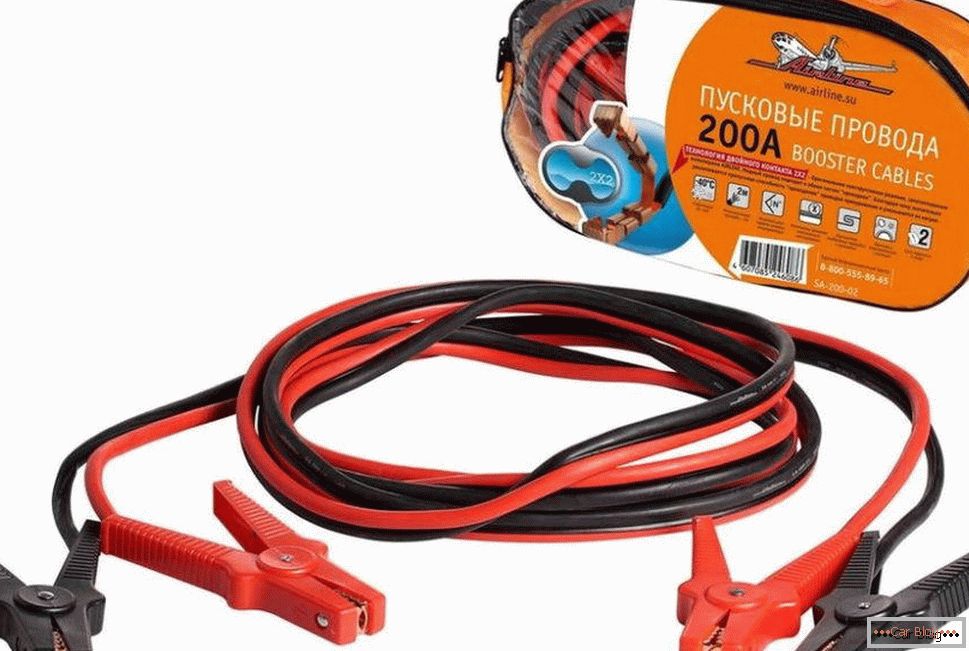
AVS
Inexpensive Chinese kit worth 400 rubles and ranked third in the ranking. In many respects - due to the high declared frost resistance (up to -40º С), which, in principle, corresponds to reality. Cables are packed in a round case. The label provides brief technical specifications of the kit, from which it follows that the launch wires are designed for cars equipped with petrol engines up to 2.5 liters and diesel power units up to 2.2 liters (what is the relationship between engine performance and cable charging current? just guess). Like most competitors, the method of connecting wires with clips - double mechanical crimping, plastic braid is marked in the form of the logo of the manufacturer. The material for the manufacture of crocodiles is steel, there is copper spraying, the grips of the clips for convenient dressing on the battery terminals are provided with insulating plastic lining. The number of cores in the cable is also standard - 120, as is the diameter of one core (0.3 mm. With a cross section of 0.07 mm2). The total cable area is 9.6 mm2.
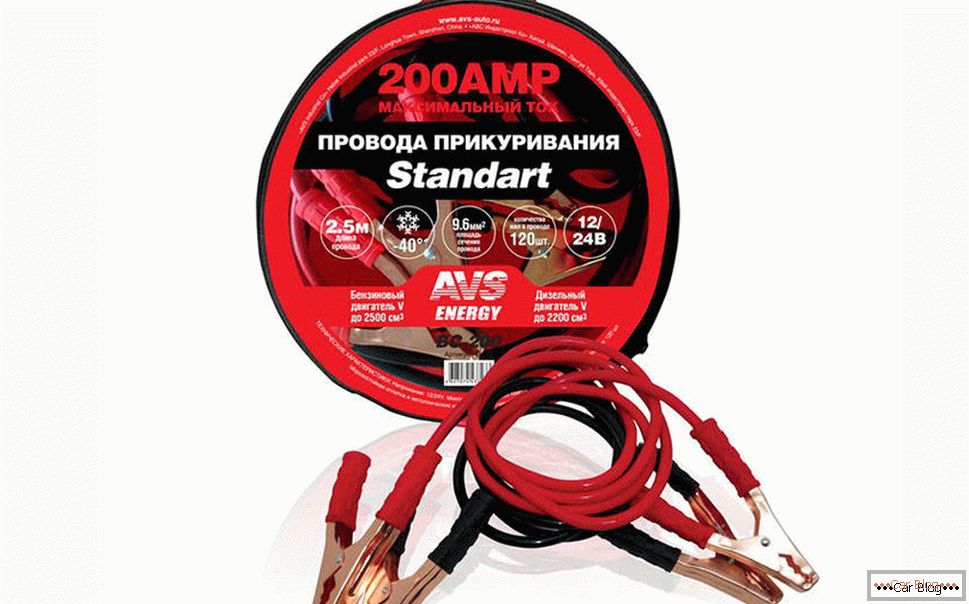
ALCA
A relatively inexpensive set from another manufacturer from Germany (retail price - from 570 rubles). Wrapped in a nice round case with zipper. The etiquette is provided with sufficiently detailed instructions explaining how to use the kit. The method of connecting the wire with a "crocodile" - double crimp. Insulation marking does not contain any technical data other than the brand name. The frost resistance of the wires is not specified, but at -40º C the braid begins to crack when bending, so this product is of little use for the northern areas. The crocodiles themselves are made of plastic and have steel contacts coated with copper, the method of attaching the contacts to the crocodiles is riveted. Cable specifications: the number of cores in the wire is 120, the core diameter is 0.3 mm (which corresponds to the cross section of 0.07 mm2). The total cable cross-section is 8.5 mm2.
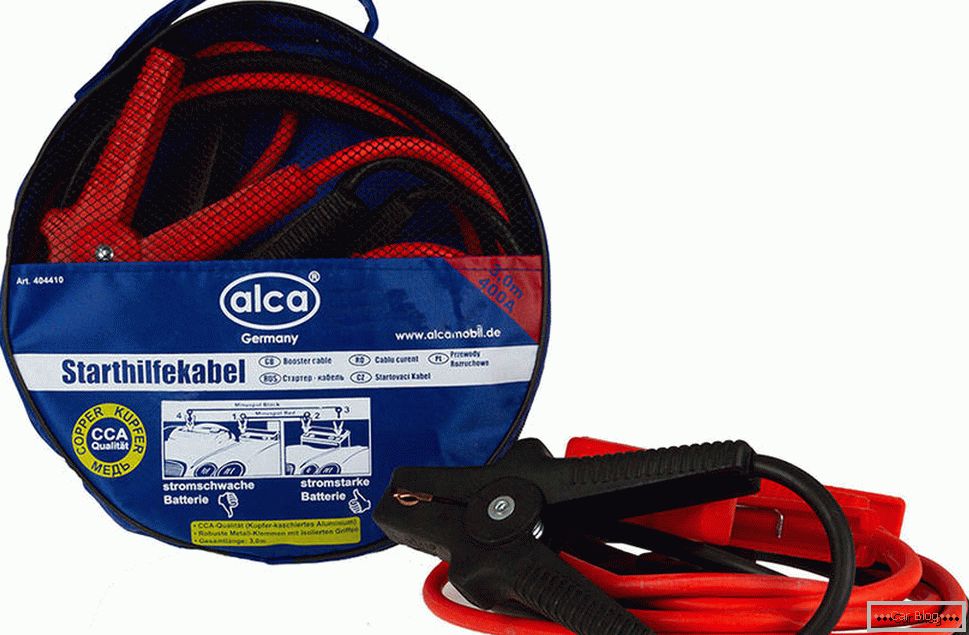
Tiger
Probably, many of you associate the name of this company with Finland, but in reality these are Chinese products belonging to the budget class (the cost of a set is from 300 rubles, depending on the length of the cable). The wires are packed in a round-shaped case (it looks like this is becoming the de facto standard for this product), inside of which there are not very thick cloth gloves. The level of frost resistance is -40º С, the scope of use is power units up to 1.6 liters (petrol) and 1.4 liters (on diesel fuel). The cable is strong - the positive and negative wires are connected into one whole, the method of connecting the "crocodile" with the wire is a single mechanical crimp. The handles of the clips are equipped with plastic insulating plates, the clips themselves are steel, there is a copper plating. On the veins, the Chinese clearly saved, their number - 70 veins with a standard diameter of 0.3 mm and a cross section of 0.07 mm2. The total cable cross-section is 4.9 mm2 - and this is one of the smallest indicators of our rating. That is, this is a good and inexpensive kit will come in handy for low-power vehicles.
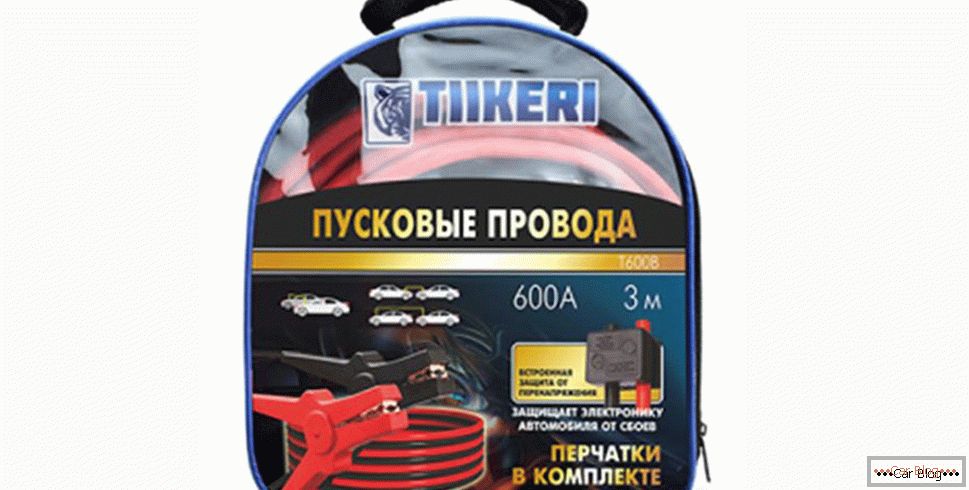
Nova Bright
These starting wires are developed in the USA, but are made in Celestial. They can also be reasonably attributed to the budget class (the cost starts from 300 rubles). The kit is packed in a round case. The length range is small - from 1.5 to 2.5 meters. Positive and negative wires are made separately, the insulation is a transparent plastic. The method of connecting "crocodiles" and current-carrying wires - double crimp. The clips themselves are made of steel and coated with copper. Handles "crocodiles" are equipped with plastic lining. Cable specifications: number of cores - 60, core diameter standard - 0.3 mm. with a cross section of 0.07 mm2. The total cable cross-section is 4.2 mm2, and this is the thinnest wire in our rating.
